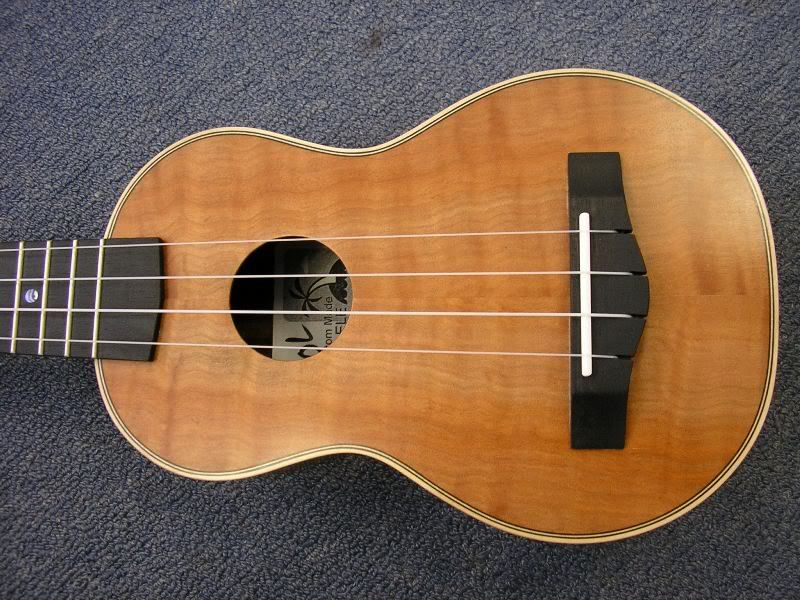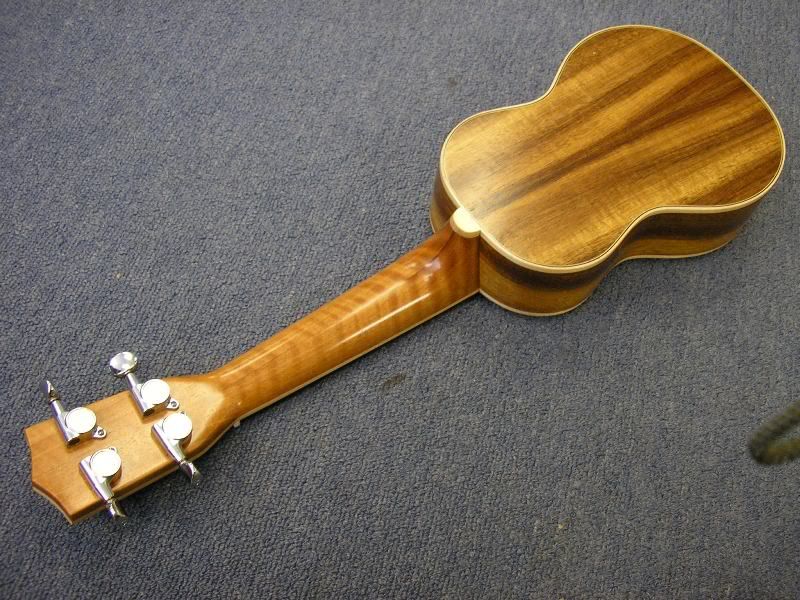











Cheers
Tim Nicol












Thanks Davehilo_kawika wrote:Very nice work. Clean and very attractive.
I would make two comments:
There doesn't appear to be any soundhole backing patch to prevent cracks in the soundhole in the future.
The bridge looks to be ~ three times the size of a regular soprano. This will definitely have an adverse effect on tone and volume.
aloha,
Dave Hurd
http://www.ukuleles.com
hilo_kawika wrote:yes.
aloha,
Dave Hurd
Hippety Hop wrote:Stewart - MacDonald's fret calculator
Actually, that's not quite true. Because string stiffness increases as string length decreases, the shorter the scale length the more important it is to carefully intonate each string. That is, soprano ukuleles require more intonation care at the saddle than do concerts, than do tenors as I show here:Localele wrote:"Can of Worms" that intonation of ukes.Such a short scale length and lovely stretchy strings . Seems that tiny errors are magnified.Getting the action nice and low to make them easier to fret is about all you can do.Cheers.
Users browsing this forum: Google and 45 guests